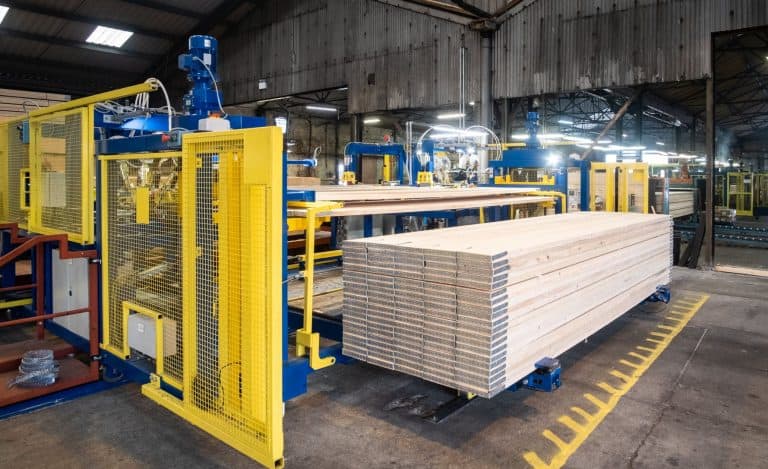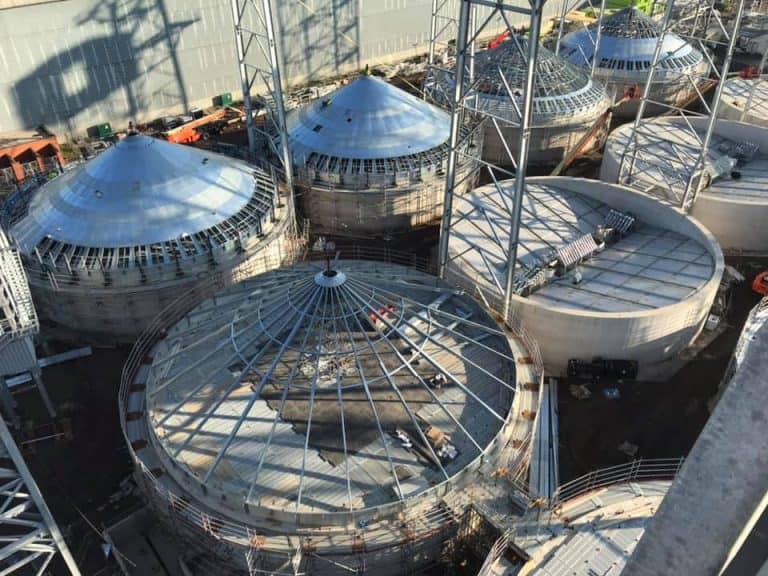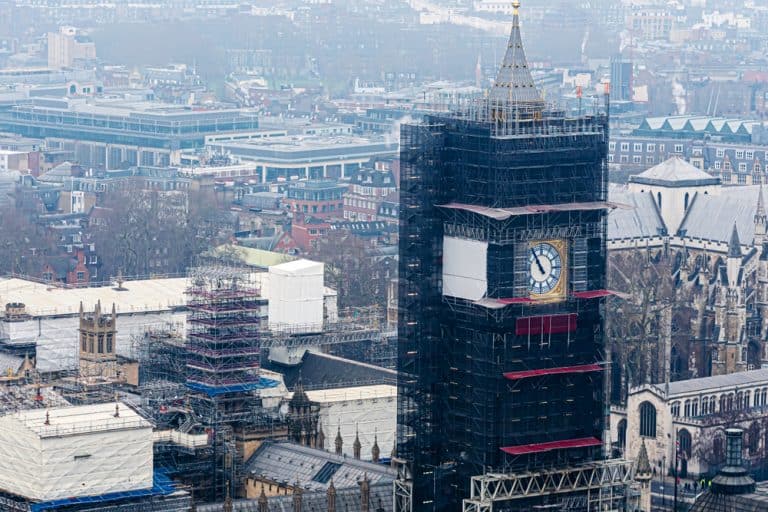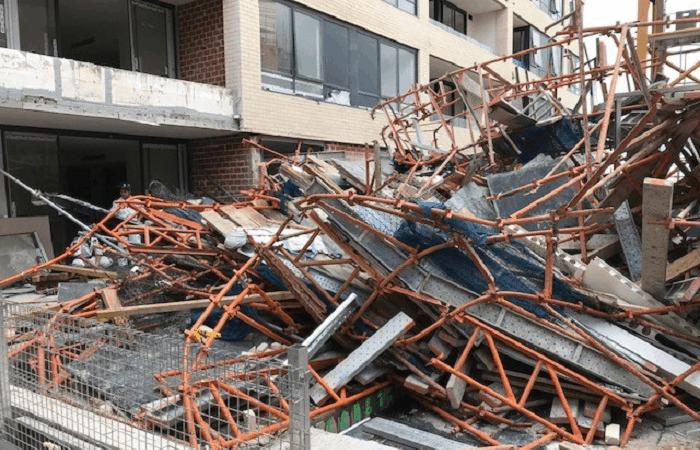ISL Scaffolders In Life Saving Drama
The quick actions of two ISL scaffolders almost certainly saved the life of a contracted welder who suffered a bleed on the brain.
Both Interlink Scaffolding Ltd (ISL) employees Ryan Lane, 24 and Anthony Robinson, 35, were getting changed in the locker room ready to start their shift at the Teesrep Biomass Power Station Project, back on 4th September. The lads began to converse with a contracted welder and all seemed fine. Within seconds, however, the welder who works for Buttimers Engineering based in Ireland suddenly sat down saying he didn’t feel well. Moments later the family man collapsed to the floor. What made things worse was the fact the scaffolders realised he was both bleeding from the mouth along with swallowing and biting his tongue. Though not trained first aiders, they remembered how to place someone in the recovery position and quickly cleared the welder’s airways. The first-aid post wasn’t too far away and on calling for help it arrived speedily in the form of a site medic. The man in his early 40’s was given first aid until the emergency services arrived, taking him straight to the James Cook hospital on Teesside. Doctors confirmed the man had suffered a bleed on the brain and consequently, a stroke. It emerged the actions of the scaffolders had certainly saved the welder’s life, and he’d be able to make a full recovery. It’s been confirmed he is indeed recovering well and is extremely appreciative of the help he received. ISL specialises in tube and fitting scaffolding due to its flexibility and cost advantages on medium to long term projects. ISL Safety Manager Stuart Kidner told me: “Everyone is extremely proud of what Ryan and Anthony did, and the way they reacted to a very difficult situation. Medics confirmed they were responsible for saving the man’s life, and the great news is he’s recovering well. The lads have been given a special reward from the company and received lots of praise. The first-aid post wasn’t too far away, but their quick thinking made such a difference. It’s good to know there’s a real sense of teamwork and togetherness on site. They deserve all the praise in the world for their efforts.”Government launches biggest upgrade of nation’s buildings in a generation
Homes, schools and hospitals across England are set to be greener and cheaper to run thanks to a £3 billion plan to upgrade the nation’s buildings
Around 120,000 construction jobs are expected to be supported by the new government funding schemes launched today. Homeowners can sign up for big savings on upgrades to their homes under the government’s £2 billion Green Homes Grant. And an additional £1 billion was announced to improve the energy efficiency of publicly owned buildings. Many scaffolding businesses could see an influx of new enquiries as grants offered will cover green home improvements ranging from the insulation of walls, floors and roofs, to the installation of double or triple glazing. The launch of the Green Homes Grant forms part of a wider plan to upgrade the nation’s buildings which also includes:- £1 billion to boost the energy efficiency of public buildings, including schools and hospitals through a Public Sector Decarbonisation Fund
- new measures to ensure nearly 3 million privately rented homes are upgraded to modern energy efficiency standards by 2028
- £50 million to improve the energy efficiency of social housing
“I urge everyone to visit the Green Home Grants website to see how they can make the most of this fantastic scheme.”
Chancellor Rishi Sunak said: “We promised to support jobs and protect the environment – and the Green Homes Grant delivers on this. We’re giving homeowners, landlords and local authorities the funding they need to hire local tradespeople and make our homes more energy-efficient. By supporting the green van men and women, we’ll save money, save jobs and save the planet.”Innovative TRAD Mini Catch Fan delivers better site safety
The simple-to-install system protects site workers, visitors and general public
- Manual installation means no cranes or lifting gear needed
- Ideal for urban or challenging sites
- Complies with BS EN 12811-4 classifications
- Connects to the scaffold with proprietary scaffold claws
- No tooling required
- Designed for strength and flexibility
- Lightweight aluminium design
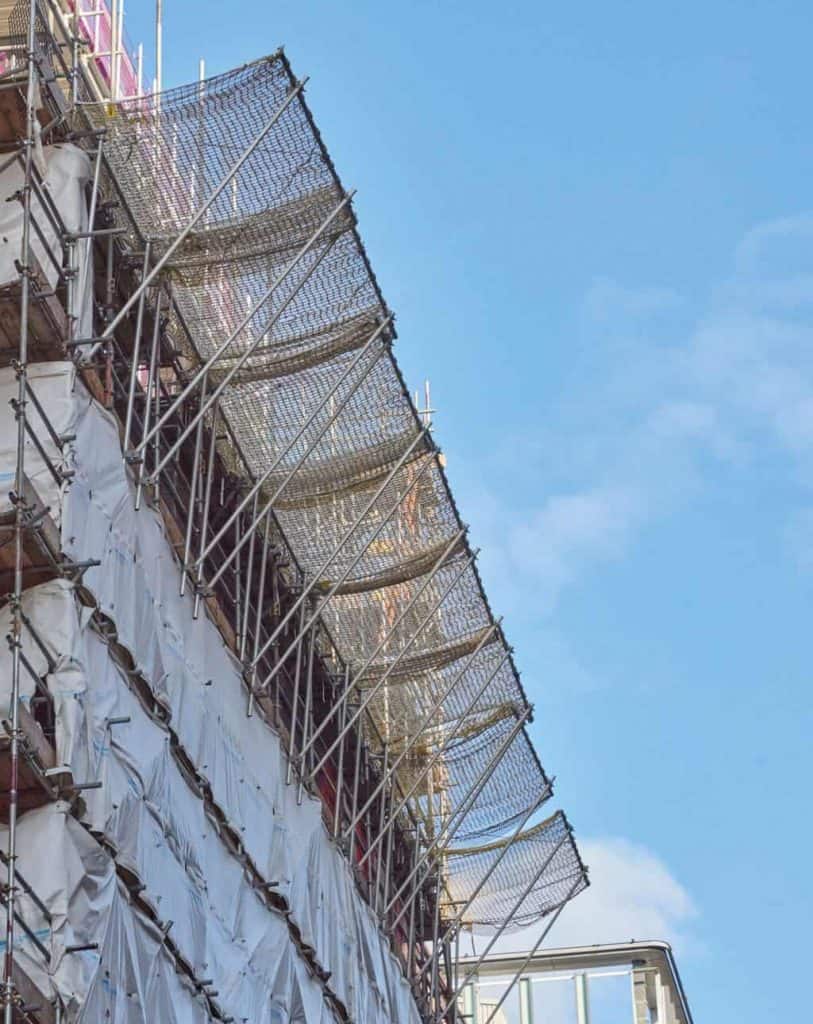 “TRAD’s Mini Catch Fan has proved extremely popular with a wide range of customers,” says Alan Slater, Head of Technical and Product Support. “The simple manual installation means there is no need for expensive permits for cranes or other equipment, and the product allows sites to remain safe even in very constrained environments.”
“TRAD’s Mini Catch Fan has proved extremely popular with a wide range of customers,” says Alan Slater, Head of Technical and Product Support. “The simple manual installation means there is no need for expensive permits for cranes or other equipment, and the product allows sites to remain safe even in very constrained environments.” Construction site face mask guidance updated
The Construction Leadership Council (CLC) has published new guidance on the use of face coverings on construction sites.
In response to the latest government guidance, the CLC now recommends that where workers on site are not required to wear Respiratory Protective Equipment (RPE) and their workplace (which may include welfare and changing facilities, site offices or site meeting rooms) meets all of the criteria below, their employer should make face coverings available and they should be worn in:- an enclosed space;
- where social distancing isn’t always possible;
- where they come into contact with others they do not normally meet.
Scaffolding around Big Ben roof to be removed
The roof of the Elizabeth Tower (also known as Big Ben) will slowly become visible again from this week, as part of the scaffolding is removed.
The newly restored roof of one of the worlds most iconic structures will be revealed to the world after three years of extensive restoration. Organisers say it is a significant moment in the timeline of the complex conservation project since scaffolders started to erected the huge scaffold in 2017. Over the course of the next six weeks, an expert team of scaffolders from PHD Modular Access will work to take down the scaffolding in the restricted space around the Tower, revealing the intricate conservation work that has been taking place. At this stage, scaffolding will only be removed from the roof, while work continues to the rest of the Tower. Sir Lindsay Hoyle, Speaker of the House of Commons, said: “Like everyone else, I have been looking forward to seeing the scaffolding come down on Elizabeth Tower – so the unveiling of the roof will be a memorable moment. “We could all do with some good news in this Covid world, so it is very exciting to actually see some more of this great icon. “I am hoping the conservation work that has taken place on the tower – an important symbol of our democracy – will assure its place in London’s skyline for generations to come.” Extensive work has restored both the inside and the outside of the Elizabeth Tower, including the 3,433 roof tiles and the spire with its intricate flowers, cross and orb. The conservation work addresses crucial problems in the tower, including crumbling stone and a leaky roof. Each of the 3,433 cast iron roof tiles was removed and taken to a specialist workshop in northern England. Those that could be repaired were stripped of the old finishing and any weaknesses and faults were mended before the tiles were repainted with weatherproof grey paint. The Tower’s signature metal cross and orb, which sits proudly 96 meters above ground level, has also been repaired at the workshop. After the roof tiles and the cross and orb were put back in place, a team of gilders spent weeks gilding the ornate details to match the original design from 1859. Despite the challenge brought about by the pandemic, the small 12m square footprint of the site and the Tower’s position in the middle of a working Parliament, progress continues to be made. The worksite has been made fully covid-secure, allowing work to continue. The Ayrton Light housing has been restored and reinstalled and now only awaits its new energy-efficient electrical light fittings. In the belfry, the internal scaffolding has been removed and the work to the floor is underway.HSE to run month-long inspection blitz in construction
HSE inspectors are set to target construction sites in Great Britain to check that their health standards are up to scratch.
Starting on Monday 5 October the month-long inspection blitz will focus on respiratory risks and occupational lung disease. The HSE will be looking at the measures firms have in place to protect their workers’ lungs from the likes of asbestos, silica and wood dust.It’s part of HSE’s longer-term health and work strategy to improve health within the construction industry.
While the primary focus will be on health during this programme of inspections, if an HSE inspector identifies any other areas of concern, they will take the necessary enforcement action to deal with them.
This will include making sure that businesses are doing all they can to protect their workers from the risk of coronavirus and make workplaces COVID-secure.
The HSE says inspectors will also be looking for evidence of employers and workers knowing the risks, planning their work and using the right controls. If necessary, they will use enforcement to make sure people are protected.
The construction initiative will be supported by HSE’s ‘Dustbuster’ campaign, aimed to influence employer behaviour by encouraging builders to download free guidance and advice, increasing knowledge and capability to protect workers’ health.
More than 3,500 builders die each year from cancers related to their work, with thousands of more cases of ill-health and working days lost.
HSE’s chief inspector of construction, Sarah Jardine, said: “Around 100 times as many workers die from diseases caused or made worse by their work than are actually killed in construction accidents.
“Our inspection initiatives ensure that inspectors are able to speak to dutyholders and visit sites to look at the kind of action businesses in the construction industry are taking right now to protect their workers’ health, particularly when it comes to exposure to dust and damage to lungs.
“There are a few simple things that everyone can do to make sure they are protecting their health and their future. Be aware of the risks associated with activities you do every day, recognise the dangers of hazardous dust and consider how it can affect your health. We want businesses and their workers to think of the job from start to finish and avoid creating dust by working in different ways to keep dust down and wear the right mask and clothing.”
